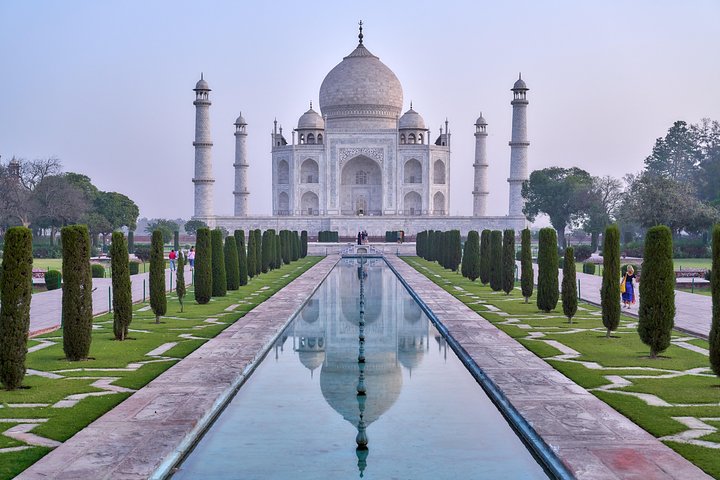Exploring the Timeless Beauty of Mughal Architecture: A Day in Agra
Drawn by the allure of Mughal architecture, I embarked on a day trip from Delhi to Agra, eager to explore the iconic Taj Mahal and the historic Agra Fort, culminating in the enigmatic Fatehpur Sikri. This journey promised a deep dive into the heart of India’s rich history and culture.
A Journey Through Time: The Taj Mahal
As the first rays of dawn kissed the horizon, I found myself embarking on a journey that promised to be nothing short of magical. The drive from Delhi to Agra was a serene prelude to the grandeur that awaited. Upon arrival, the Taj Mahal stood before me, a vision in white marble, its beauty transcending the bounds of time. This architectural marvel, a testament to eternal love, was built by Shah Jahan in memory of his beloved wife, Mumtaz Mahal.
Walking through the Gardens of Paradise, I was enveloped in a sense of tranquility, the gentle hum of history whispering through the air. The mausoleum, with its intricate carvings and precious inlays, was a sight to behold. As I stood before the graves of the emperor and his queen, I couldn’t help but reflect on the timeless love story that had inspired such a masterpiece. The Taj Mahal is not just a monument; it is a symphony of art, history, and emotion, a place where the past and present coexist in perfect harmony.
The Majestic Agra Fort
Leaving the ethereal beauty of the Taj Mahal behind, my journey continued to the Agra Fort, a UNESCO World Heritage site that stands as a testament to the might and grandeur of the Mughal Empire. Built by Emperor Akbar, this red sandstone fortress is a marvel of design and strategy. As I wandered through its vast courtyards and opulent palaces, I was transported back to a time when emperors ruled with an iron fist and the fort served as both a royal residence and a military stronghold.
The fort’s architecture is a blend of Islamic and Hindu styles, a reflection of the cultural amalgamation that defined the Mughal era. Each corner of the fort tells a story, from the Diwan-i-Am, where the emperor addressed his subjects, to the Diwan-i-Khas, where he held private audiences. The fort’s strategic design, with its massive walls and intricate defense mechanisms, speaks volumes about the ingenuity of its creators. Standing atop the fort, gazing at the distant silhouette of the Taj Mahal, I felt a profound connection to the history that had unfolded within these walls.
The Enigmatic Fatehpur Sikri
The final leg of my journey took me to Fatehpur Sikri, a city that once thrived as the capital of the Mughal Empire under Emperor Akbar. Today, it stands as a ghost city, its grandeur preserved in stone, a silent witness to the passage of time. As I explored its deserted streets and majestic palaces, I was struck by the architectural brilliance that defined this city.
Fatehpur Sikri is a masterpiece of Indo-Islamic architecture, with its red sandstone buildings and intricate carvings. The Buland Darwaza, the grand gateway, stands as a symbol of Akbar’s vision and ambition. Walking through the Jama Masjid, one of the largest mosques in India, I was enveloped in a sense of awe and reverence. The city’s abandonment remains a mystery, adding to its enigmatic allure.
As I made my way back to Delhi, the memories of this day lingered in my mind, a tapestry of history, art, and culture. This journey through the heart of Mughal India was not just a tour; it was an experience that touched my soul, a reminder of the timeless beauty and grandeur that define this incredible land. Mughal Architecture Tour



















































